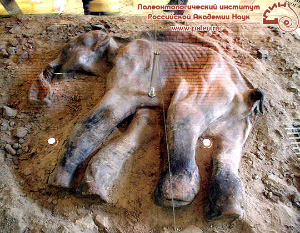Stem cells and Oriental cloning

Immediately, two genetic news came from Japan Square.
The first, interesting from the point of view of the future person, is the successful experience of obtaining functioning brain tissue from stem cells. Initially, the purpose of the experiment was to recreate the tissues of the cerebral cortex (which, as IPPavlov bequeathed: "The supreme controller and distributor of animal and human organism functions"), but in the end, the researchers managed to obtain cells of various tissues. Remarkably, scientists in the land of the rising sun managed to create tissue samples not only from embryonic stem cells (as is usually the case), but also from “adult” cells present in the skin and hair.
The transplantation of cloned tissues has the best prospects, because in regenerative therapy, only a few diseases can be cured by transplanting cells, and much more - transplanting functioning, “living” tissues: ranging from building up lost limbs and ending with cancer.
')
The grown fabrics, at the moment, are still too small for their practical use, but, as stated in a press release from a research institute, research aimed at creating adult tissues will continue. In addition to experiments with human stem cells, the Japanese successfully did the same with the cells of laboratory mice, even creating a network of neurons on the basis of their tissues that respond to stimulation.

Without finishing with laboratory rats, we continue further: on the basis of a dead cage, which has lain for 16 years in a frozen state (-20 Celsius, the temperature is similar to the frozen soil, in which the famous mammoth Dima was found), the mouse was successfully cloned.
Researchers at the Riken Institute isolated the cell nucleus from a dead mouse organ and grafted it into a live mouse egg cell, resulting in the emergence of a clone capable of reproduction. This is not just news, but News with a capital letter, because such experiments open the way to the restoration of extinct animal species on the planet, such as mammoths, saber-toothed tigers and ... go to revise the Jurassic Park.
And if, until recently, such experiments did not end in success and seemed to be more fiction than reality, scientists still have a solution to another difficult issue: interbreeding with currently existing species. Thousands of years ago, at least half of the now common diseases, infections, viruses and everything else that could kill a “new-old” creature before birth did not exist.
In order to clone a mammoth (which so far seems to be the safest, most likely, and realizable being), researchers need to find a way to inoculate a mammoth cell nucleus in an elephant's egg, and then implant it. However, even if a living creature cannot be “born”, cloned embryonic stem cells can be obtained in the process, which will give another impetus to work in this area.
According to iScience
Source: https://habr.com/ru/post/44373/
All Articles